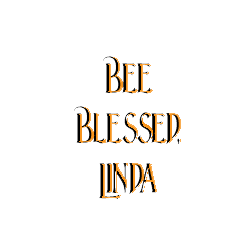 |
| One of the little bags made from Darla's submitted Design a Bag pattern |
My sister, Darla, is guest blogging here today. She is only 3 1/2 years younger than me, and living only 4 miles away. What adventures we would have if we were rich and retired! She has recently gotten "hooked" on Spoonflower. See what she has to say about it and be sure to go to Spoonflower and vote! I'm voting for her!!!
I guess it was inevitable that I would get into fabric design. Some of my earliest memories are of Linda and me playing at our mother’s feet while her machine was humming along. I can remember when she got her “new” Kenmore sewing machine. She was so proud of it. She made us Poodle skirts and petticoats. Well, that was back in the 50’s.
You can just imagine growing up with Linda as your older sister. She was prettier, she was smarter and she had all the talents and she had boobs!…and in case, you don’t know it; Linda means beautiful and Darla doesn’t mean anything. So that is where I am coming from. (Note from Linda! This is totally untrue! All of it, except the meaning of our names!)
 |
| Darla on left, Linda on right (about ages 6 and 9) |
 |
| My fabric design Crafty Ladies (that is Linda and me) |
I love what I do but I am guilty of moaning and complaining a little about not having time to do it all those cool things Linda is doing. Linda’s passion is quilting and she is really good at it but her true passion is in the creation of the quilts. When I began to learn how to do watercolor I was hooked and painting became my passion. Now years later on the threshold of retirement I can envision having some time to be more creative. In the last year or so Linda has mentioned the Spoonflower website, a site for independent fabric designers to upload their designs to make fabric. Recently, Linda mentioned it at exactly the right moment and I went exploring. I uploaded a drawing I had done as a demonstration for my high school art students, not one I had ever intended to make into fabric so it was just an adventure to me.
It arrived in the mail!!! You know, something happens to you when you see your design on a piece of fabric...I carried it around with me. I stopped people on the street, in parking lots, took it to school with me, showed it to all of my students…I was beyond excited! But fabric design is not just like painting in watercolor. There is more to know and luckily I have technical skills in Photoshop. I purchased A Field Guide to Fabric Design by Kimberly Kight and set out to make designs with fabric in mind. In fact, when Linda suggested I be her guest blogger I had already thought about asking if she would like me to be. You see, sisters support each other like a good bra.
 |
| My entry for the contest (The fabric is printed in the shape of the pattern. How easy is that! -Linda) |
So go, explore Spoonflower.com and while you are there take a look at the bag contest. My bag will be the purple one shown here. Feel free to pick your favorites and cast a vote. Read the directions on Spoonflower for how to cast your vote. You may vote for as many as you would like.
One of the features Spoonflower offers is a shop for the designers which can make the fabric available to the public. Check out my shop. I don't sleep anymore. I sneak downstairs and design!
So this is what all the fun is about!
Thanks, for hosting me, Linda. I owe you!
(Hmmm.......that's tempting!)
So this is what all the fun is about!
Thanks, for hosting me, Linda. I owe you!
(Hmmm.......that's tempting!)
 |
| (Darla on left, Linda on right) Christmas morning |








































